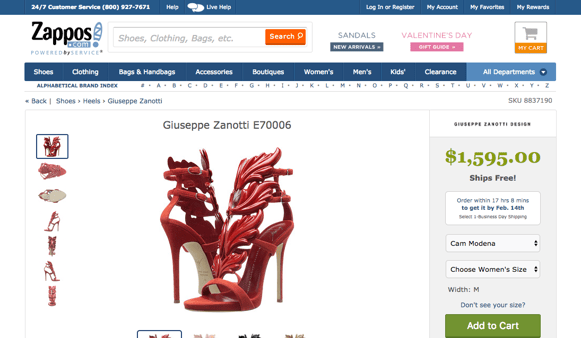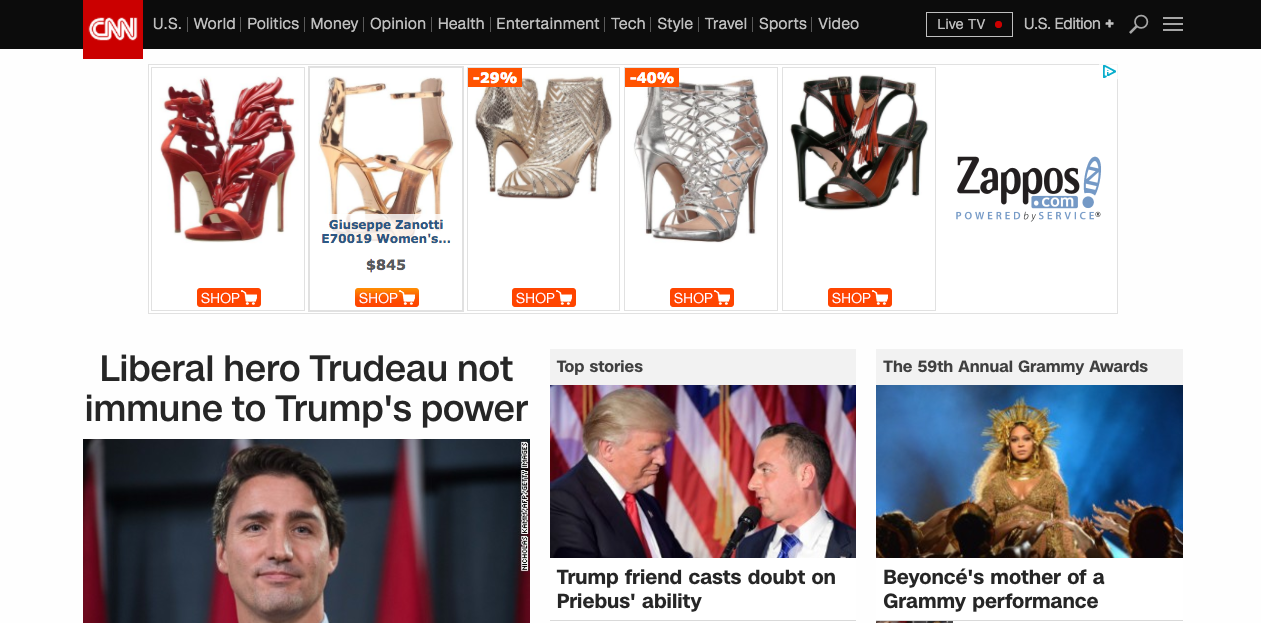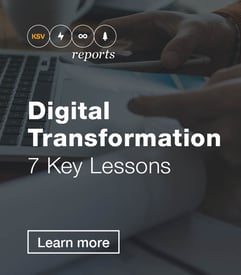If you've ever downloaded a KSV brief, you know we ask you what you want to see more of on EnergyWire, and this week we got a great response to that question.
David told us (hi David!) that what he wants to see more of is "digital stories".
First of all, what a great request. Second of all, we're kind of in love with that term.
Imagine if the way you were interacting with your customers was through digital stories, instead of through ads that weren't aware of the experience your customer had already had with you.
Imagine if your advertising could be a storyteller for your brand, instead of being tone deaf.
So this week, we’re going to talk about one way to prevent being tone deaf: Frequency Capping.
Ever look at a pair of shoes online and then they start following you through your online life?
Well, this is the tale of an exorbitantly expensive pair of shoes that we didn't want to actually buy (we swear), but we did want to use them as fodder for our story.
If you've ever shopped on Zappos.com, you know that they are an incredible company. From redefining how mission can impact company culture, to forging a new standard in customer-centricity (if you've ever gotten the "free overnight shipping just because", you've experienced their customer-centric design), Zappos sets a great example that every company should be working toward.
And Zappos figured out, along with many other advertisers, that re-targeting ads to customers who had shown interest in a particular product was a great way to nudge them toward a conversion.
But as incredible as re-targeting is, it's also flawed.
You could be using re-targeting to tell an ever deeper story, to test out different versions of an ad or bring people through an experience.
But most campaigns don't take advantage of what re-targeting can do. No, most companies, even the most sophisticated, just put that thing in front of your eyeballs again, to the point of it being annoying.
So: back to the shoes.

These shoes are over $1k. And as far as we can tell, they were not made so that anyone could actually walk in them.
So we decided to put them in our cart on Zappos, and not make the purchase, and see what happened.
And low and behold, the next time we went on Facebook, there they are.
Checking the news... shoes.

When we just wanted to know if Beyoncé was going to win a grammy.

In fact, these shoes are still following us around the internet. From Facebook to Slate.com to CNN to Fast Company, they are in every corner of the internet we visit.
And we had no intention of ever buying them.
So Zappos is burning ad dollars on us, and we are being chased by these shoes, and nobody is happy.
And you just might be doing the exact same thing.
If you're re-targeting (and you should be), you must also be frequency capping.
Frequency capping means limiting the amount of times that the same person will be exposed to an ad set before you stop re-targeting them.
And notice that we said "ad set" and not "single ad".
We're introducing a second best practice here, which is that if you are re-targeting, you really must also be varying the message to tell a better story, and take advantage of every opportunity to create context, relevance, and storytelling for your customers.
And maybe, just one more bonus best practice, while we're on the topic of digital storytelling and re-targeting.
How do you know when to turn off your home audit marketing to a certain person? Or your fridge recycling or smart thermostat campaign?
What happens if they convert into that program? Do you stop marketing it to them?
You should.
What's more frustrating than being served up ads for an offer you don't want?
Being served up ads for an offer you've already completed.
So:
1. Don't be tone deaf. Use frequency capping and other best practices to make your ads effective and relevant.
2. Vary the message to tell a deeper story, prevent annoyance, and drive interest.
3. Integrate your data to reduce waste and stop marketing to people who have already participated in your program/offer/product.
Want more digital stories? Check back soon and in the meanwhile, take a look at our brief on Digital Transformation.

